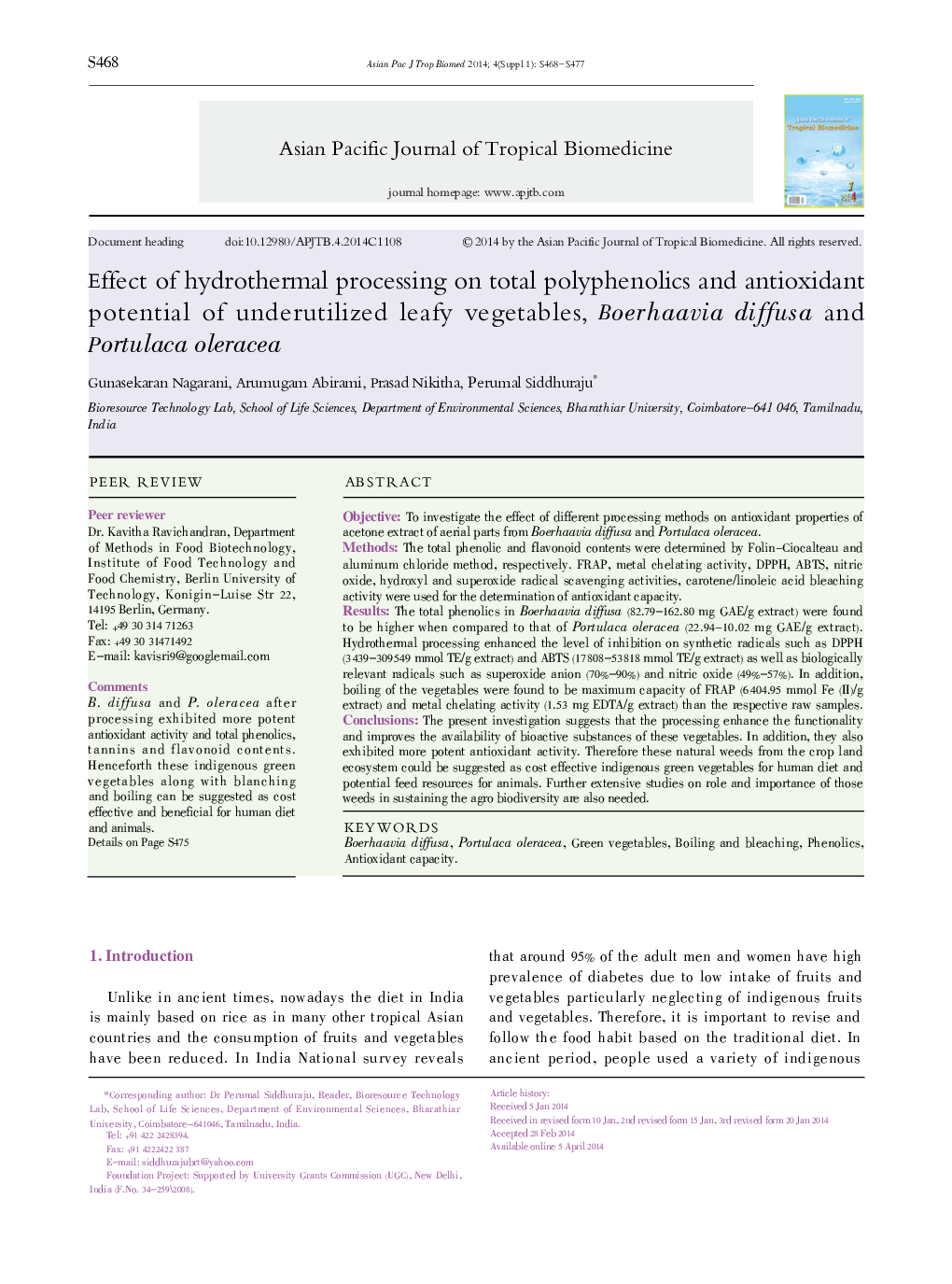| Article ID | Journal | Published Year | Pages | File Type |
|---|---|---|---|---|
| 2032843 | Asian Pacific Journal of Tropical Biomedicine | 2014 | 10 Pages |
ABSTRACTObjectiveTo investigate the effect of different processing methods on antioxidant properties of acetone extract of aerial parts from Boerhaavia diffusa and Portulaca oleracea.MethodsThe total phenolic and flavonoid contents were determined by Folin-Ciocalteau and aluminum chloride method, respectively. FRAP, metal chelating activity, DPPH, ABTS, nitric oxide, hydroxyl and superoxide radical scavenging activities, carotene/linoleic acid bleaching activity were used for the determination of antioxidant capacity.ResultsThe total phenolics in Boerhaavia diffusa (82.79–162.80 mg GAE/g extract) were found to be higher when compared to that of Portulaca oleracea (22.94–10.02 mg GAE/g extract). Hydrothermal processing enhanced the level of inhibition on synthetic radicals such as DPPH (3 439–309 549 mmol TE/g extract) and ABTS (17 808–53 818 mmol TE/g extract) as well as biologically relevant radicals such as superoxide anion (70%-90%) and nitric oxide (49%-57%). In addition, boiling of the vegetables were found to be maximum capacity of FRAP (6 404.95 mmol Fe (II)/g extract) and metal chelating activity (1.53 mg EDTA/g extract) than the respective raw samples.ConclusionsThe present investigation suggests that the processing enhance the functionality and improves the availability of bioactive substances of these vegetables. In addition, they also exhibited more potent antioxidant activity. Therefore these natural weeds from the crop land ecosystem could be suggested as cost effective indigenous green vegetables for human diet and potential feed resources for animals. Further extensive studies on role and importance of those weeds in sustaining the agro biodiversity are also needed.
